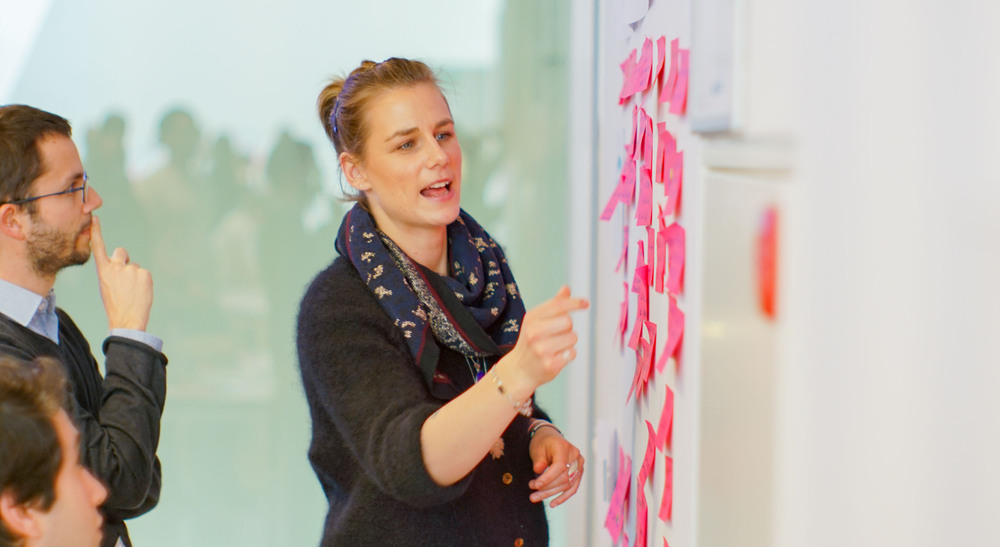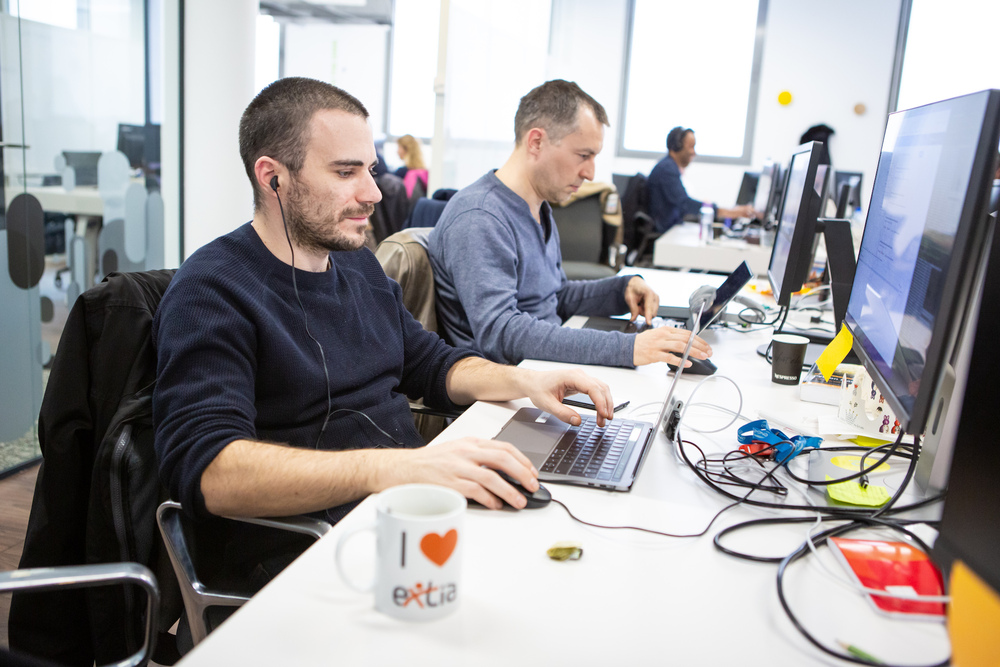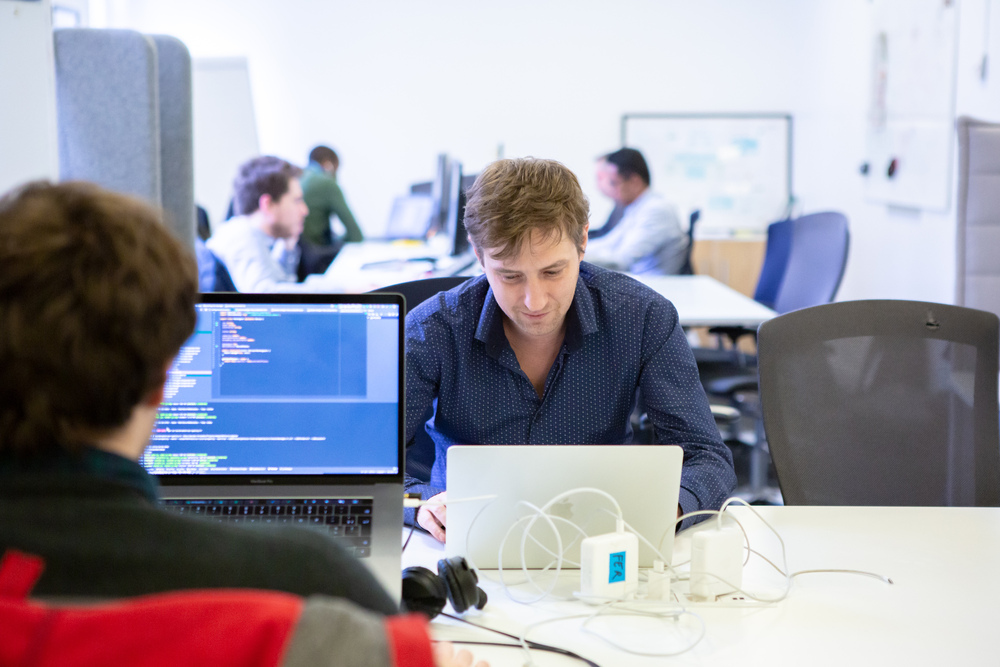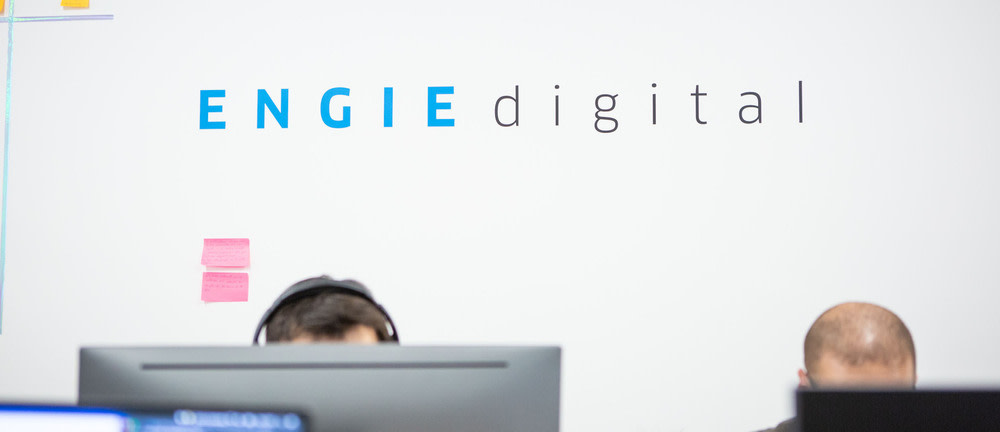ENGIE is a global leader in low-carbon energy and services. In response to the urgency of climate change, its ambition is to become the world leader in the zero-carbon transition “as a service” for its customers— in particular global companies and local authorities. They rely on key activities such as renewable energy, gas, and services. Complementing the shift towards sustainability with efficient technology, ENGIE kicked off an internal “innersource initiative,” building software that leverages and learns from open source best practices within the Group.
Tooling and CI/CD Leader Jean-Hervé Laveau explained that the initiative is about “sharing capacities and knowledge and sources to scale—we think there’s an important opportunity for sharing, and innersourcing increases our development capabilities.” To do this, they turned to GitHub. “With GitHub, we can share at scale, all around the world,” with employees spread across 70 countries.

Innersource Project Lead Florent Zara said, “The idea is to promote innersource inside ENGIE Digital, help break down the silos, and encourage people to collaborate together.” Innersourcing makes it easier for ENGIE Digital to discover, customize, and reuse code, leading to lower costs and greater flexibility within the community.
Zara’s team also benefits from the proximity to the open source community. “GitHub is where open source code starts,” he said. “When you want to open source a project, share it, and collaborate on it with others, you have to put your code on GitHub.”
To support their development cycle, ENGIE Digital builds on GitHub with Jenkins, JIRA, Terraform, Artifactory, a tool suite branded internally as “Walnut”. “Everything is linked,” said Zara. “There is glue between all these components.” With the foundational pieces in place, Zara moved on to what he referred to as “the second and more difficult step: Changing our team’s mindset to help them collaborate the way people do on open source.”

As they transitioned from closed-off development teams to the more open innersource model, there was resistance. Zara said, “Many people were wondering, ‘Why’. Why share code with other teams? Why collaborate?” So they started slow with an internal website called Digiplace. There, each digital project has a GitHub repository, and employees work in smaller teams. “We’re working with people that have never shared their code—so it’s a big mindset change,” said Charline Grenet, Head of Digital Communities and Communications,
Good documentation is crucial to ensure these teams are following best practices for innersourcing. “We’re setting up a tool for Python, and in the coming days for Java, that will take the documentation we write, generate it, format it, and push it automatically to GitHub Pages,” said Zara. “So developers can see documentation changes almost as soon as we make them on a GitHub Pages site.” By automatically generating technical documentation from their source code, team members can focus on core functionality instead of learning how things work.
To foster the development of new projects, Laveau and Zara are leading a community of digital doers acting on the topic of innersource. At ENGIE Digital, there are five communities, one for each key topics for the Group’s digital transformation: Innersource, API, Design, Customer Interfaces and Archi for Cloud.
“That’s what I love about GitHub. We can scale and build projects on a new level now. It’s not about how good you are alone. It’s about the greatness we can achieve through sharing and collaboration.”
The community has three goals: “skill up” or keep learning and share knowledge within the group. The second is “scale up”, which places an emphasis on sharing code and scaling projects; “Everything we do has to be industrialized to be reusable,” said Grenet. “We want to have projects that will be 100% innersourced.”
The third goal is to “speak up” to developers outside ENGIE, positioning the company as an important player in the digital world. GitHub is an ally when it comes to recruiting, said Zara. “You can attract more people and more talent when you mention you’re using GitHub.” Plus, “We don’t have to train them. They already know the tool.” There’s also an interesting social element: Users can “comment on code, review it, and watch the stars.” The “starring” function on GitHub allows users to keep track of repositories and discover new related content, encouraging a collaborative and supportive atmosphere.

Before GitHub, each ENGIE business unit was using their own suite of tools. Now, with the internal GitHub offering proving attractive both functionally and financially, it has become the defacto standard for new projects across business units. More teams are migrating to GitHub in order to decommission their own tools. “We want to help everyone benefit from each others’ success, knowledge, and practices. This is where GitHub comes in,” said Grenet.
This shift has been paramount to innovating within ENGIE Digital, and building better, more reliable, and more secure software. For hands-on consulting when they need it most, GitHub and ENGIE Digital have a professional services engagement. “We had some high availability features we wanted to implement and we just didn’t know how,” said Zara. Their GitHub partner arrived and saved the day. “He showed us a more efficient way of doing things.” He also shared ways of measuring success for innersource projects, said Zara, “so we can see if our efforts to work more openly are having an effect—and see exactly how GitHub fosters collaboration between projects.”
Looking ahead, Laveau hopes to use GitHub to share their software with bigger partners and providers, even cities. “It’s very important for us to make the software more transparent.” As of today, most of Engie’s hundreds of developers are using GitHub, and innersourcing builds trust, process, and alignment within the teams. “The whole focus is on how my everyday job can be put to good use for the whole group,” said Grenet. More contributions mean more opportunities. “That’s what I love about GitHub. We can scale and build projects on a new level now. It’s not about how good you are alone. It’s about the greatness we can achieve through sharing and collaboration.”



